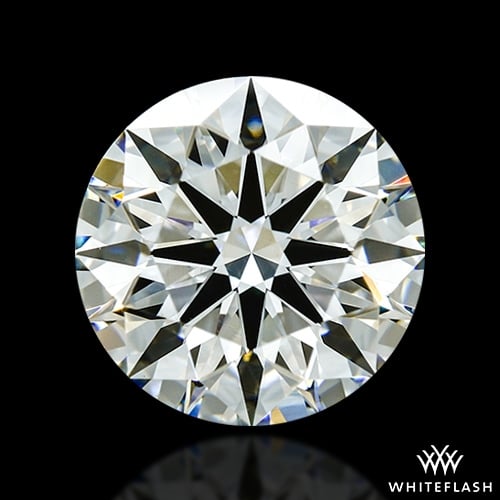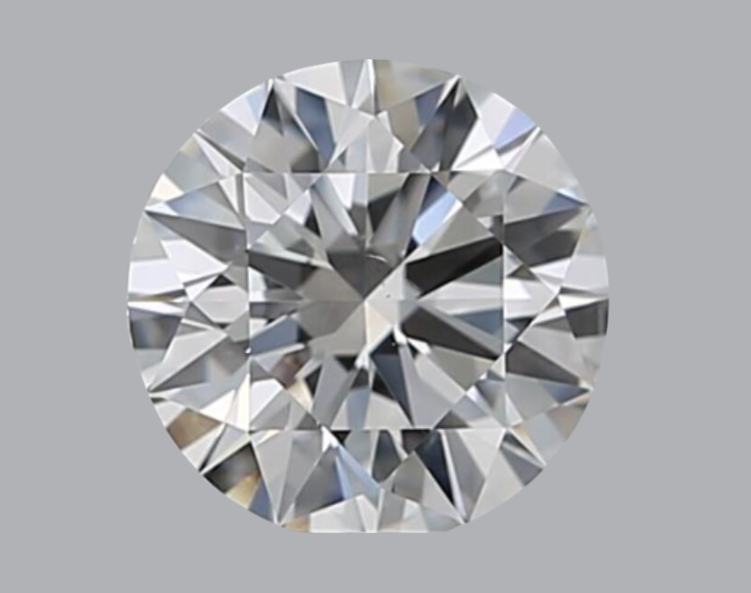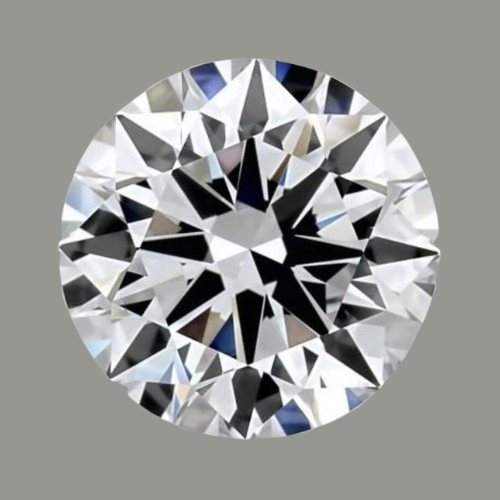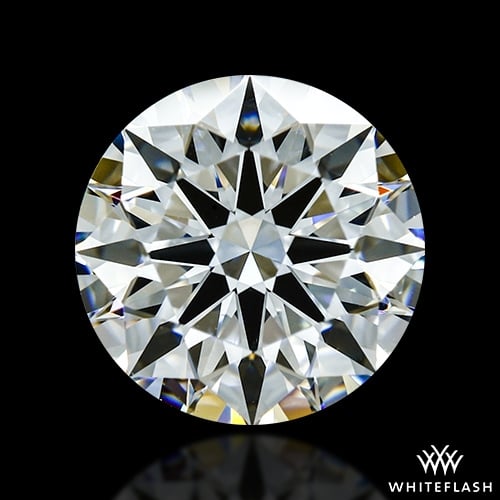If you’re considering the purchase of a laboratory-grown (lab-grown) diamond, it’s natural to wonder how their costs compare to natural diamonds. Over recent years, lab-grown diamonds have surged in popularity, fueled by demand and technological improvements, leading to a dramatic price reduction. This guide aims to help you navigate the cost of lab-grown diamonds and secure the best deal possible.
Introduction to Lab-Grown Diamonds
Lab-grown diamonds are man-made diamonds created using the exact same chemical properties as natural diamonds. These man-made gems are carbon structures chemically and visually mimic natural diamond crystals. Despite being visually stunning, such as these exquisite 3.00ct lab-grown diamonds from Adiamor and Blue Nile, their value and resale are relatively low.
Educate Yourself Further: Not quite ready to make your diamond purchase just yet? That's okay! PriceScope is committed to educating its users. Check out our vast library of educational content to better understand diamonds and make a confident decision when you're ready.
Comparison of Natural Diamonds and Lab-Grown Diamonds
Unlike natural diamonds, which form over billions of years, lab-grown diamonds are produced over a few weeks. Although visually identical, their value and price differ significantly, with lab-grown diamonds not retaining any resale value.
Natural Diamonds
Lab-Grown Diamonds
Much like natural diamonds, lab-created diamonds’ prices vary significantly. They range from affordable options like this 1.00ct for $1,290 from James Allen to premium selections like this 1.02ct for $1,550 from Whiteflash.
Factors That Contribute To The Price Of Lab-Created Diamonds
Several factors contribute to the price of lab-created diamonds:
- Shape: Round brilliant diamonds are the most expensive due to their popularity, followed by oval and asscher cuts.
- Cut: The cut significantly influences a diamond’s beauty, with ideal or excellent cut diamonds commanding higher prices.
- Carat Weight: The diamond’s weight impacts the price, with heavier stones being more costly.
- Color: Lab-created diamonds are graded from D (colorless) to Z (yellow or brown tint) by IGI. Although better color grades cost more, we recommend G-J range diamonds as they appear colorless but are more affordable.
- Clarity: Clarity refers to the absence of blemishes and inclusions. Clean diamonds cost more, but we recommend VS1 and VS2 diamonds as they are eye-clean and more affordable.
- Certification: We advise choosing IGI certificates for lab-created diamonds as they provide reliable grading.
Replacing a natural diamond with a lab-created diamond from James Allen, Whiteflash, Adiamor or Blue Nile in your ring could lead to significant savings.
Understanding Diamond Certification: Whether you're leaning towards a lab-grown or natural diamond, PriceScope offers detailed guides on diamond certifications from globally recognized institutions. Equip yourself with knowledge and confidence before you buy. Learn About Diamond Certification Here
Value of Lab-Grown Diamonds
Lab-grown diamonds have negligible resale value. If you attempt to sell one, you’ll likely receive a fraction of what you paid, so it would need to be purchased at a significant discount to compensate for the lack of value retention.
Price Difference between Lab-Grown and Natural Diamonds
Although lab-grown diamonds are cheaper, their lack of resale value makes them less value for money. For instance, a natural diamond retains around 50% of its value post-purchase, and over time, this value may increase if diamond prices rise.
Compare Diamond Prices: Looking to ensure you're getting the best deal for your diamond? PriceScope’s diamond price comparison tool lets you compare prices from our trusted vendors. Make an informed and financially smart decision today.
Why Are Lab-Created Diamonds Expensive?
Lab-created diamonds are less expensive compared to natural diamonds, but they still require significant investment and resources to produce. There are two primary methods of producing lab-grown diamonds, both of which replicate the natural processes that form diamonds over millions of years:
High-Pressure, High-Temperature (HPHT): This method replicates the natural conditions under which diamonds form in the Earth’s mantle. A carbon source (usually graphite) is placed inside a press under high temperatures (around 2552°F) and high pressures (around 5 GPa). A diamond seed crystal is also placed into the press, which serves as a template for the diamond formation. Over several hours or days, the carbon atoms rearrange themselves into the diamond crystal structure, creating a diamond. This process is highly energy-intensive, requiring the use of special equipment that can produce and maintain these extreme conditions.
Chemical Vapor Deposition (CVD): This method involves placing a thin slice of diamond (the seed) in a sealed chamber and filling it with a carbon-rich gas, like methane. The chamber is heated to temperatures of about 1472°F. The gas is ionized into plasma using microwave power, which breaks down the gas molecules and allows the carbon atoms to adhere to the diamond seed, slowly building up layers of diamond. Although CVD uses lower pressures and temperatures than HPHT, it’s a slower process, taking several weeks to produce a diamond.
Both methods have their unique advantages and challenges, influencing the cost of lab-grown diamonds. HPHT, for instance, is more energy-intensive and faster, while CVD is slower but less intensive. Besides, the costs of quality control, cutting, and polishing the diamond also contribute to the final price.
Furthermore, lab-created diamonds have lower costs associated with extraction, as they avoid the environmental and social issues linked with mining. However, they still represent a technological achievement that requires advanced scientific knowledge, precision, and resource investment, all of which contribute to their cost.
Price Evolution of Lab-Grown Diamonds
In the last three years, the price drops in lab-grown diamonds have been dramatic. For example, a 1-carat I VS lab-grown diamond dropped from $4,100 at the beginning of 2017 to $2,850 (a 35% drop). This trend is expected to continue as technology becomes less expensive.
Lab-Grown vs Natural Diamonds: A Fair Comparison?
While technical factors suggest the price of lab-grown diamonds will continue to decrease, their popularity may not wane, mainly due to diamonds’ symbolic significance in engagements.
Looking to Buy Your Perfect Diamond? Now that you understand the differences between lab-grown and natural diamonds, why not start shopping? Whiteflash offers fantastic high-quality options for lab-grown diamonds, along with James Allen, Blue Nile, and Adiamor.
Purchasing Lab-Grown Diamonds Today
Purchasing a lab-grown diamond can result in considerable savings. However, it’s essential to acknowledge that its resale value will likely be a fraction of the purchase price in the near future.
FAQs
Are lab diamonds a bad investment?
While diamonds are not typically good investments, lab diamonds perform particularly poorly as they retain almost no value post-purchase.
Who buys lab-grown diamonds?
- Individual Consumers: Many individuals choose lab-grown diamonds for ethical reasons, as they can be produced without the environmental impact and potential human rights issues associated with mining. They also tend to be less expensive than naturally-mined diamonds of similar size and quality.
- Jewelry Companies: Some jewelry companies have started offering lab-grown diamonds as a more sustainable and ethical alternative to natural diamonds.
- Industrial Users: Diamonds have many uses beyond jewelry. They are used in many industries, such as technology and manufacturing, for their hardness and thermal conductivity. Lab-grown diamonds can meet these needs at a potentially lower cost and without the environmental impact of mining.
- Investors and Collectors: As the market for lab-grown diamonds grows, there may be opportunities for investment. Some collectors may also be interested in lab-grown diamonds as a novelty.
Do lab-grown diamonds depreciate over time?
Lab diamonds lose nearly all their monetary value after purchase, but they retain their physical properties, including hardness and beauty, indefinitely.
Final Thoughts
The choice between natural and lab-grown diamonds depends on your priorities. If long-term value is your concern, choose a natural diamond. However, a lab-grown diamond could be the right choice if you’re after more sparkle for your money.






